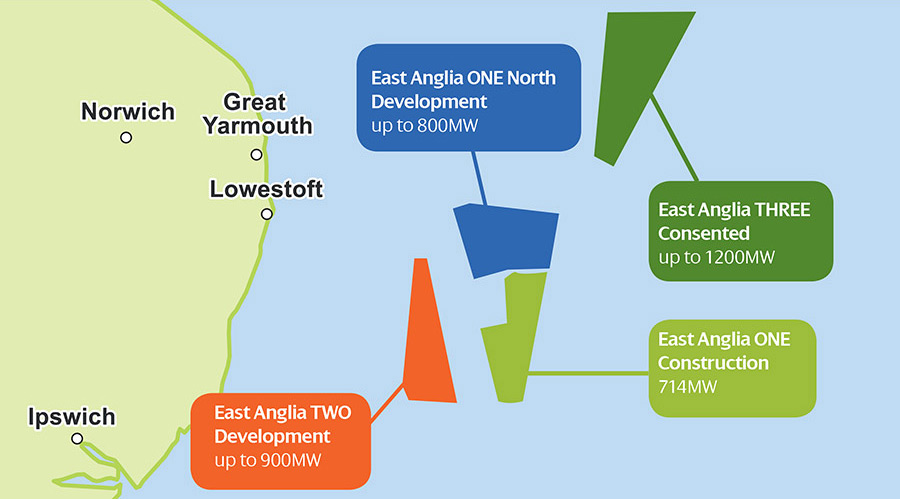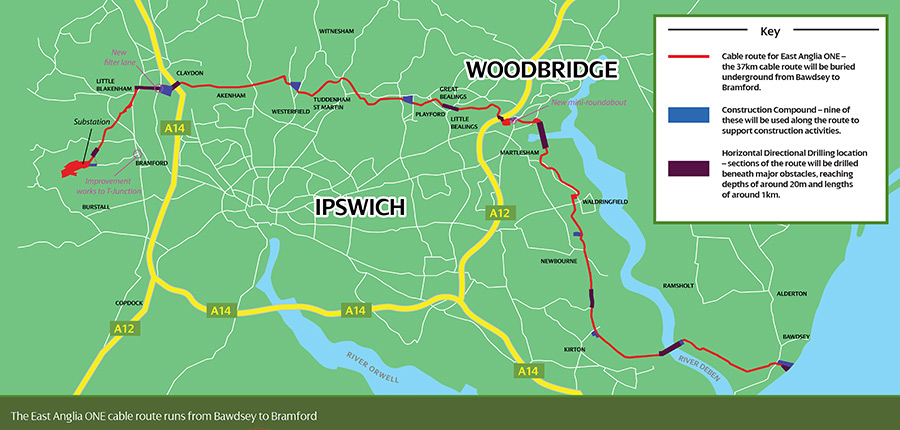In 2009, ScottishPower Renewables, working in a 50:50 joint venture partnership with Vattenfall Wind Power, was awarded rights to develop offshore capacity off the coast of East Anglia as part of the Crown Estate’s Round Three programme.
East Anglia ONE is the first of four projects in the East Anglia region to begin construction. East Anglia THREE was recently granted consent by the Planning Inspectorate. Proposals for the remaining projects are still in development.

The Project
East Anglia ONE consists of up to 102 Siemens wind turbines and foundations, each rated at 7 megawatts. This gives an overall generating capacity of up to 714 megawatts.
An offshore substation platform and its foundations are being built to collect the electricity from the turbines and transform it to a form suitable for transfer to shore.
Two seabed export cables, each around 73 km in length, will transfer the electricity to shore.
A landfall site with onshore transition pits is needed to connect the offshore and onshore cables. This is located at Bawdsey, Suffolk.
Underground cables will be used to transfer the electricity. These will be laid from Bawdsey, under the River Deben and around Ipswich to a new onshore converter station at Burstall, near Bramford. The substation will connect the offshore windfarm to the National Grid.

The onshore cable route is about 37 km (23 miles) long and is mainly located on farmland with some crossings of public highways, footpaths and bridleways. The majority of the route will be constructed using open trench methods, other than at locations where the route must go under a major transport network or natural obstacle, such as the A12 or the River Deben. The installation of the cables under these features will require underground drilling.
While East Anglia ONE is built, cable ducts for a future East Anglia project will also be installed. This will help reduce the impact of future construction, as cables for the future project would be pulled through the pre-laid ducts. On completion of East Anglia ONE, the land will be returned to the same condition as it was before. We will plant two new trees for any one tree that had to be lost.
We have nineteen access points along the cable route. To use these access points, construction vehicles must travel on specified lorry routes and avoid unsuitable local country roads. A drawing of the lorry routes can be found here. Once plant, equipment and materials arrive at one of the access points, onward delivery along the cable route will take place via a temporary road for construction traffic - the haul road – minimising the impact on the wider road network.
